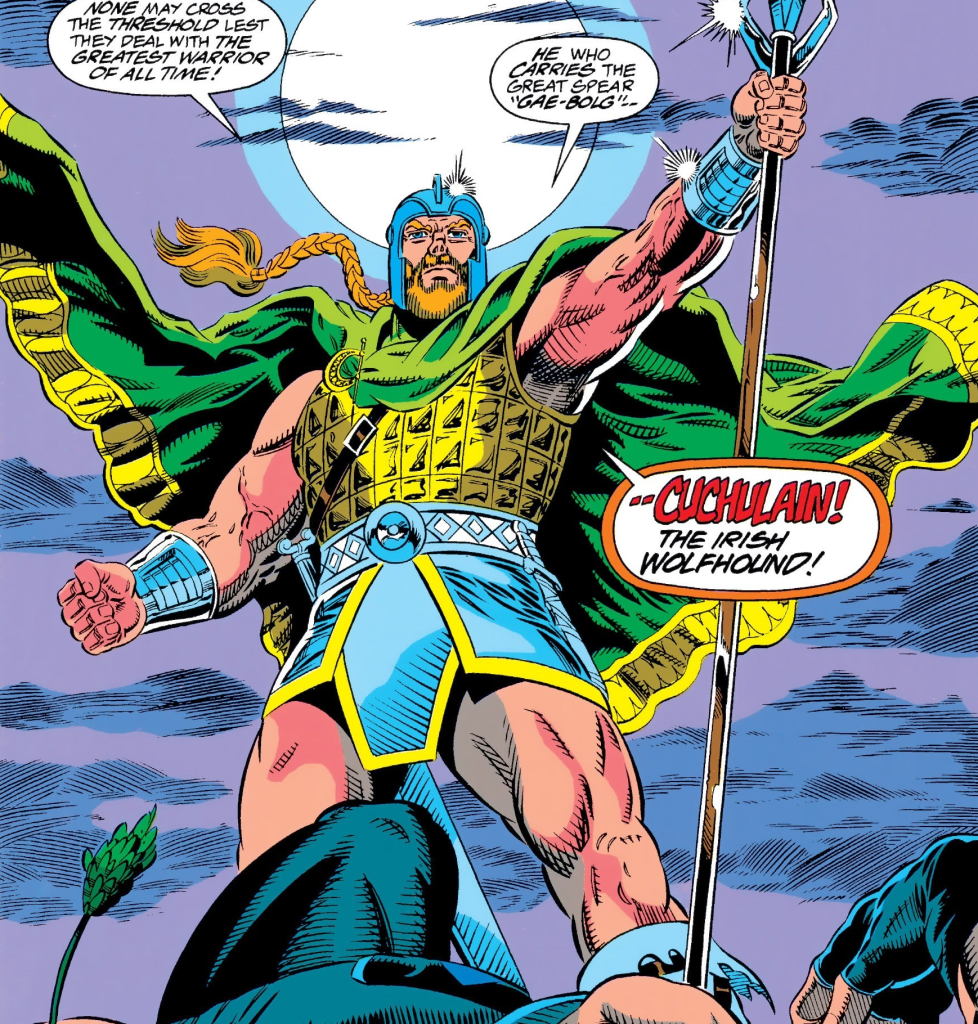For most of the musings on this blog, I have searched for the ever-elusive origins of “Irish” art. As a research question, it is not a very fruitful line of questioning. It sometimes feels like the proverbial question, “Which came first? The chicken or the egg?” Still, the exploration of cross-culturalism teaches us a great deal—particularly the exchange of ideologies in past civilizations.
However, I am fast-forwarding considerably in this post due to my recent discovery of comic book characters based on Irish mythological figures.
In 1993, Marvel Comics introduced a new character to their Guardians of the Galaxy title. This comic book series started in 1969, tells of the adventures of the Guardians of the Galaxy, a team of superheroes and aliens committed to protecting the inhabitants of the Milky Way Galaxy from all evil forces.
According to the Marvel Fandom database1, Dr. Druid summoned the soul of the “Irish Wolfhound” that resided within Molly FitzGerald, a.k.a. Shamrock, after she had become the author of none other than the mystical Book of Kells.
The “Irish Wolfhound,” a.k.a. Cuchulain, is a warrior hero from Irish mythology. His father is Lugh, the Celtic God of the sun, and his mother is Deichtire, a druid priestess. There are many tales of his heroic deeds in the old legends, and he remains a prominent figure in Irish culture to this day.
In his Marvel iteration, Cuchulain carries a “throwing stick” and dons a breastplate and helmet embellished with Celtic knotwork, with a green mantle. In Irish mythology, Cuchulain’s father, Lugh, is known as “Lugh of the long arm.” One excerpt from the “Táin Bó Cúalnge Recension 1” describes Lugh as:
A man fair and tall, with a great head of curly yellow hair. He has a green mantle wrapped about him and a brooch of white silver in the mantle over his breast. Next to his white skin, he wears a tunic of royal satin with red-gold insertion reaching to his knees. He carries a black shield with a hard boss of white-bronze. In his hand a five-pointed spear and next to it a forked javelin. Wonderful is the play and sport and diversion that he makes (with these weapons). But none accosts him and he accosts none as if no one could see him.2

Les Dieux gaulois d’après les monuments figurés, Engraving of a tricephalic god, often identified as Lugus (Lugh) J.-L. Courcelle-Seneuil,
Carnavalet Museum, Paris
Cuchulain, Marvel Comics, 1993
It seems as if the artists at Marvel may have super-imposed some of the physical attributes of Lugh on their character Cuchulain.
The mysticism and magic surrounding the heroes and heroines of the Celtic tales lend themselves well to the medium of comic book art. It is also interesting to note that some scholars have suggested a connection between the format of comic book art and medieval manuscripts.
1. https://marvel.fandom.com/wiki/Cuchulain_(Earth-691)
2. O’Rahilly, Cecile. “Táin Bó Cúalnge Recension 1”. Corpus of Electronic Texts. University College, Cork.